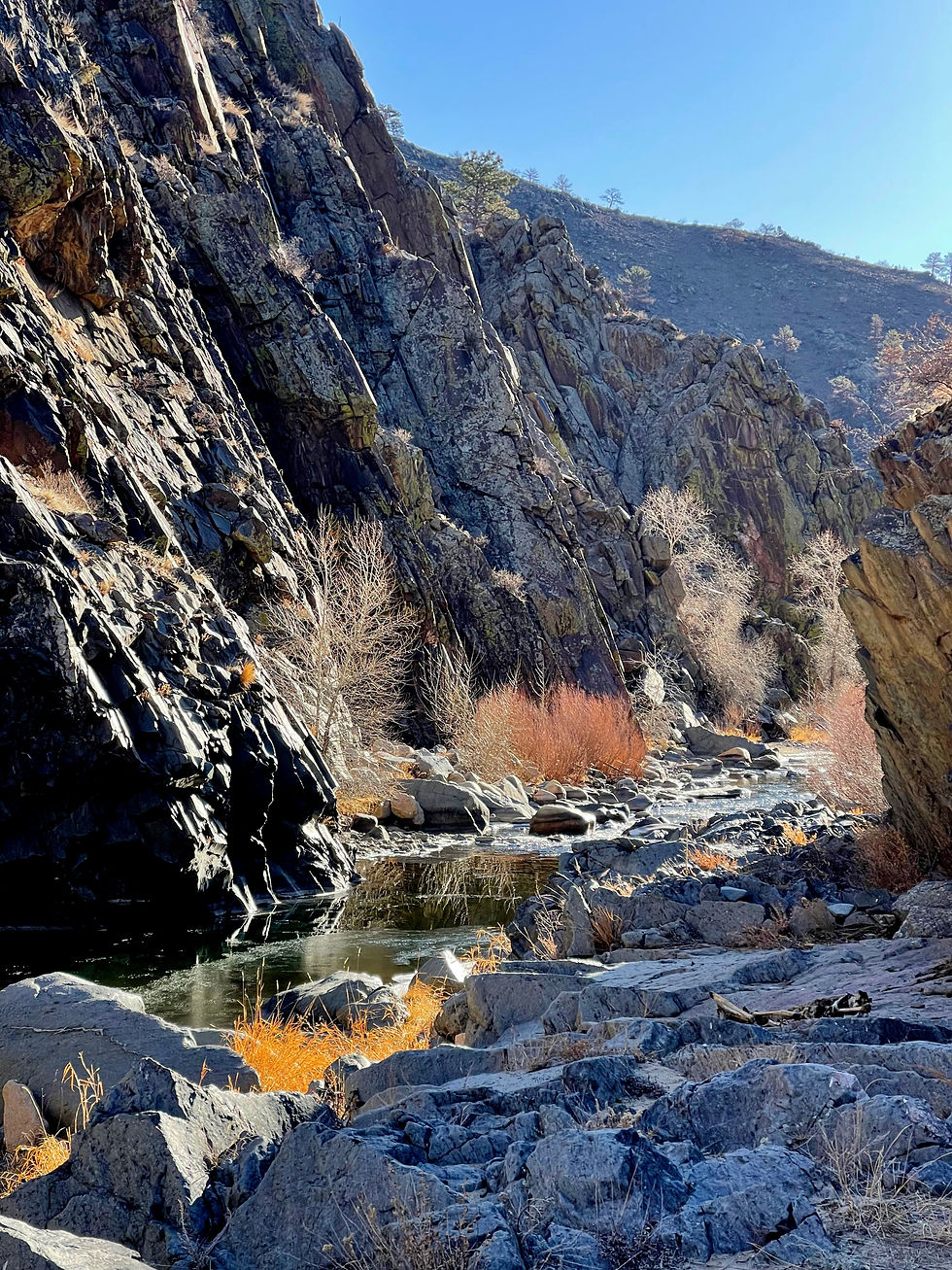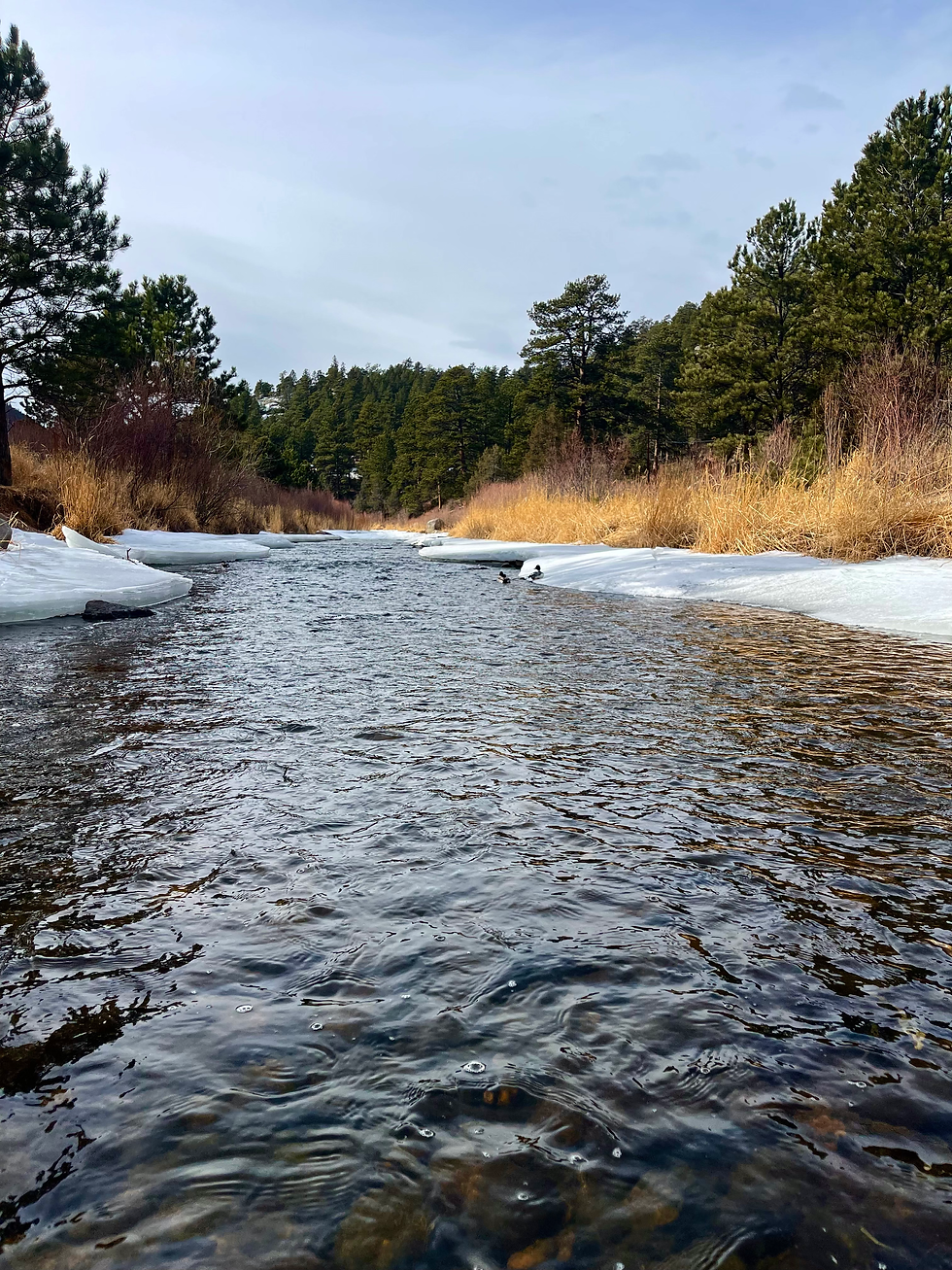“Stewards of the Stream: Fishing Ethically in the Summer Heat”
- flyingtroutco
- Jul 14
- 4 min read
Fly fishing is by far my favorite pastime. I spend a lot of time on the water—but this hobby has become more than just that. It’s seeped into every part of my life. I read books, watch films, and consume every piece of media I can find in hopes of becoming a better angler. But over the last few years, I’ve come to realize something hard: there are times when I just need to hang up the boots and pack it in.
It’s a tough pill to swallow, but it’s a truth we need to acknowledge for the sake of the resource we all love and share. Sometimes... It's just too hot to fish.
The Premise

Before we go further, let me lay out a few assumptions. This article is primarily about wild trout and catch-and-release fishing. While many of the same principles apply to stocked trout, wild trout populations tend to be more sensitive to environmental conditions. And if you’re fishing to harvest your catch, water temperature isn't as relevant—because, well, that fish is headed to the pan regardless. But for those of us who want to catch and release and see those fish swim away strong, we need to pay attention to water temps.
Why Water Temperature Matters
Trout are cold-water fish. Their physiology depends on highly oxygenated, cool water to survive. As water temperatures rise, oxygen levels drop, and trout begin to experience stress even before you hook them.
Multiple studies have documented this:
According to the U.S. Forest Service, trout begin to experience physiological stress around 68°F (20°C), and lethal limits for prolonged exposure begin near 73°F (23°C).
A 2008 study published in Transactions of the American Fisheries Society showed that mortality rates spike when catch-and-release occurs at high water temperatures, especially when combined with long fight or handling times.
The organization Keep Fish Wet cites peer-reviewed research indicating that both air exposure and warmer water significantly increase delayed mortality in trout.
This creates a summer paradox: some of the best fishing conditions (ample bug activity, aggressive feeding) occur when it’s simply not safe for the fish.
The Lesson I Learned the Hard Way
That reality hit me last summer.
It was an incredible day. I got out early and found a beautiful stretch of my favorite river. After fishing upstream, I came around a bend to a perfect tailout feeding a deep pool. I sat down for a quick break—a peanut butter and jelly sandwich—and watched as bugs started to hatch and fish began to rise. It was game on.
I tied on a dry fly and immediately began hooking up. For over an hour, it was lights out—fish after fish, mostly browns, some rainbows, all eager and healthy.
But then the sun climbed high, and the heat became oppressive. My watch read 101°F. I was drenched in sweat when I hooked a particularly nice rainbow. After a short fight, I netted it, admired it, and took a few pictures. It was out of the water maybe 30–60 seconds. But when I released it, the fish barely responded. It drifted, twitched, and then floated belly-up. I scooped it up and tried to revive it, but it was too late. That trout didn’t make it.
That moment hit hard.
What I Took from That Day
I realized that water and air temps matter more than I thought. Trout aren’t like us. They don’t sweat. They rely on the water to keep their body temperature regulated and their blood oxygenated. When the water is too warm, everything becomes harder for them—breathing, swimming, recovering.
Here’s what I changed:
I started carrying a water thermometer every time I fish.
I started checking the Trout Unlimited temperature guidelines:
Below 65°F: Safe to fish.
65–68°F: Fish cautiously. Keep them wet. Skip the photos.
Above 68°F: Stop fishing. It's time to give them a break.
That thermometer has changed how I fish in the summer. It gives me confidence I’m doing the right thing—and allows me to track patterns in my fishing log. I now log water temp alongside catch data to better understand how trout behave and when they’re most active.
Other Ways to Keep Fishing Responsibly
You don’t have to quit fishing just because it’s hot. Here are some of the ways I still enjoy time on the water without harming the resource:

1. Fish early. I often wake up at 4 a.m. to be casting by sunrise. This is when both water and air temps are lowest, and trout are actively feeding.
2. Or fish late. Evenings, dusk, or even night fishing are great alternatives to midday heat. As the sun dips, conditions improve for both you and the fish.
3. Always carry a water thermometer. For $10–20, you can remove the guesswork. Get in the habit. It matters.
4. Target warmwater species. Try your hand at carp, bass, panfish, or even musky. I recently caught my first carp on the fly and had a blast. These fish thrive in warmer waters and offer a whole different kind of challenge.
5. Fill your fly box. Use hot days to tie flies and stock up for the cooler months. Hone your tying skills now and be ready to crush it come fall.
6. Educate yourself. Check out resources from Keep Fish Wet—they provide science-backed tips for safe fish handling and encourage a wet-release ethic that improves survival rates.
Conclusion: Fish with Intention
I’m not here to guilt anyone. I’m here to share what I learned the hard way. Summer is a magical time to fish—there’s no doubt. But it’s also the most dangerous time for wild trout if we’re not careful.
Our time on the water comes with a responsibility. The rivers, the fish, the experience—they give us so much. The least we can do is return the favor by knowing when it’s time to fish... and when it’s time to stop.
If we care enough to chase trout, we should care enough to protect them too.
So go ahead—fish the summer. Enjoy it. But do it with intention, awareness, and respect.
Because one more healthy trout swimming away is worth far more than one more photo on your phone.









ความคิดเห็น